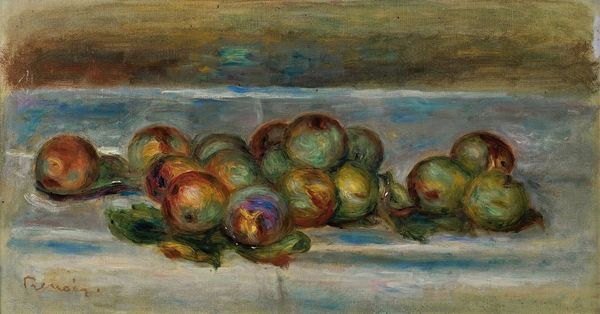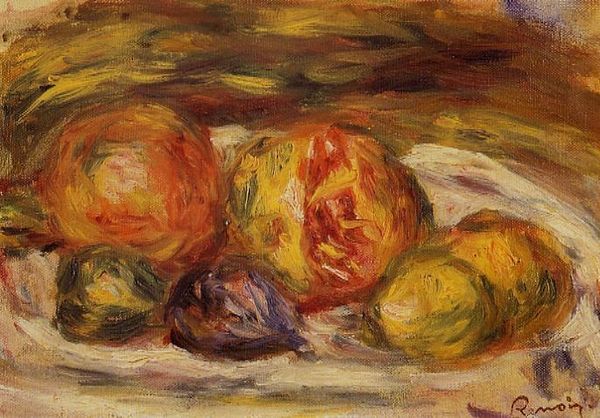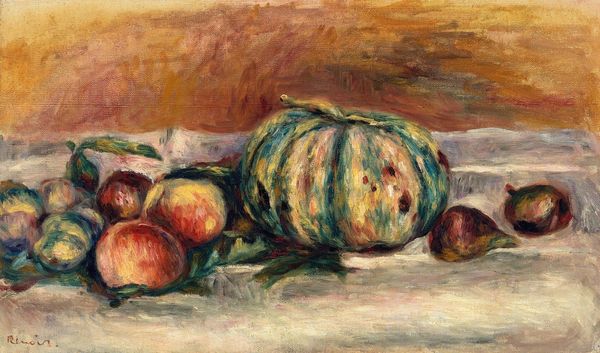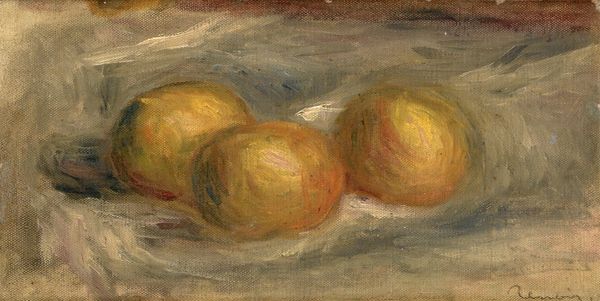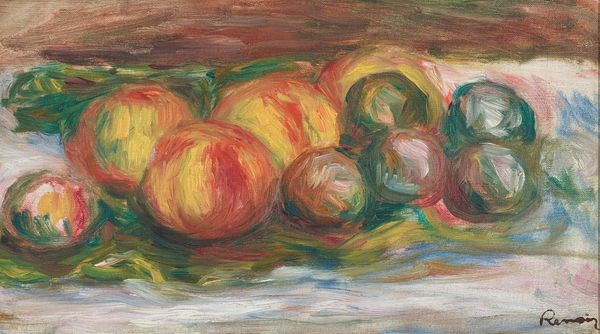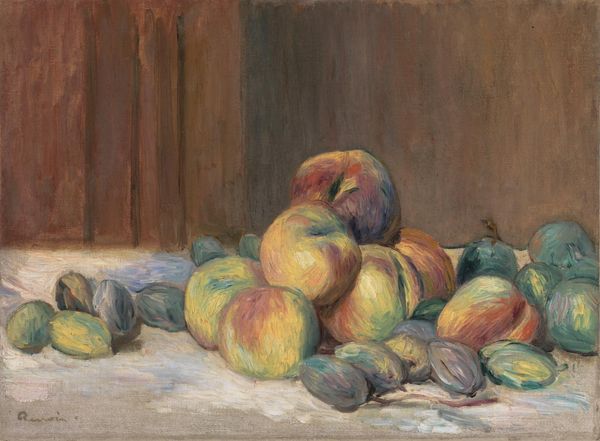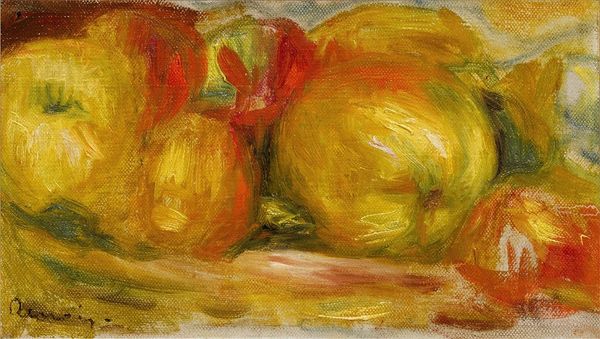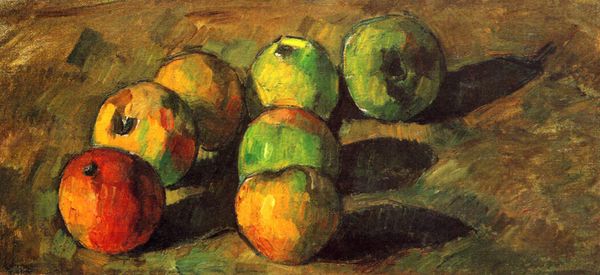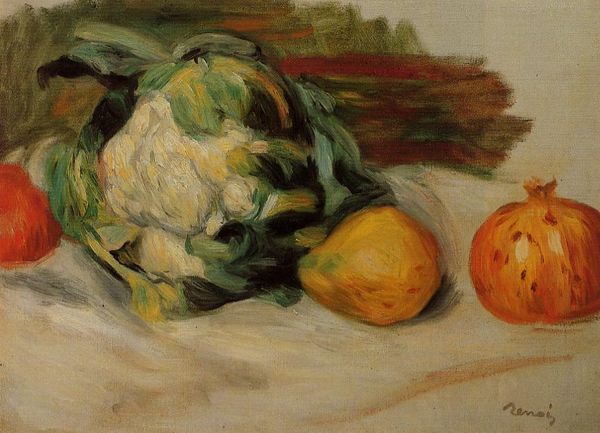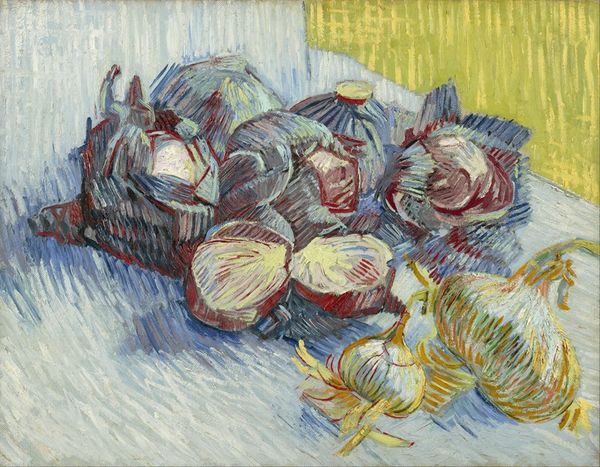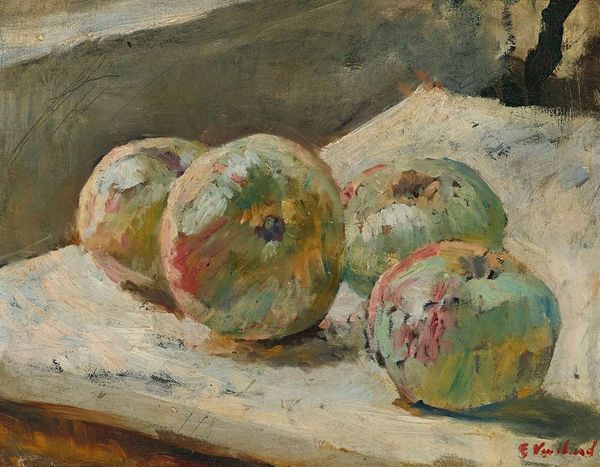
Copyright: Public Domain: Artvee
Curator: This is “Nature Morte Aux Amandes,” a still life painting created by Pierre-Auguste Renoir around 1912. Editor: It has such a delicate quality to it, almost dreamlike. The colors are muted, and the forms seem to blend together softly. It feels very intimate. Curator: Indeed. It exemplifies Renoir’s late style, moving away from strict Impressionism towards a more intimate and personal form of Romanticism. These softer forms you describe point to Renoir's artistic practice towards the end of his life. It is painted in oil paint on canvas. Editor: It makes me think about domesticity and the rituals of daily life. Looking at it through a feminist lens, it seems to capture a sense of quiet contemplation, a woman's world perhaps. Curator: Precisely. And that resonates with Intimism, a theme particularly fashionable during this time. This artistic style emphasizes the interior spaces of everyday life. Often still life and interior paintings, which historically are more acceptable genres for female artists due to the exclusion of women in specific life aspects and other pictorial formats such as history painting. Editor: Thinking about it further, I see how this emphasis on quiet domesticity, while seemingly benign, could also reinforce certain expectations and limitations for women of that era. Was Renoir intentionally engaging with these social dynamics, or simply reflecting them? Curator: Renoir, along with many of his contemporaries, did reflect those social norms in ways that could, as you suggest, normalize them. Understanding Renoir and artists alike means contextualizing the prevailing political, economic, and gendered dynamics of the era and its impact on the formation and consolidation of those artists. This kind of awareness brings to light historical forms of social expression. Editor: It's interesting how an image that initially appears so simple can actually reveal complex layers of meaning when viewed through different perspectives. Curator: Absolutely. Even in a simple painting of almonds, we see the echoes of social history. Editor: Yes, something to consider. It enriches our experience, beyond the purely aesthetic.
Comments
No comments
Be the first to comment and join the conversation on the ultimate creative platform.
